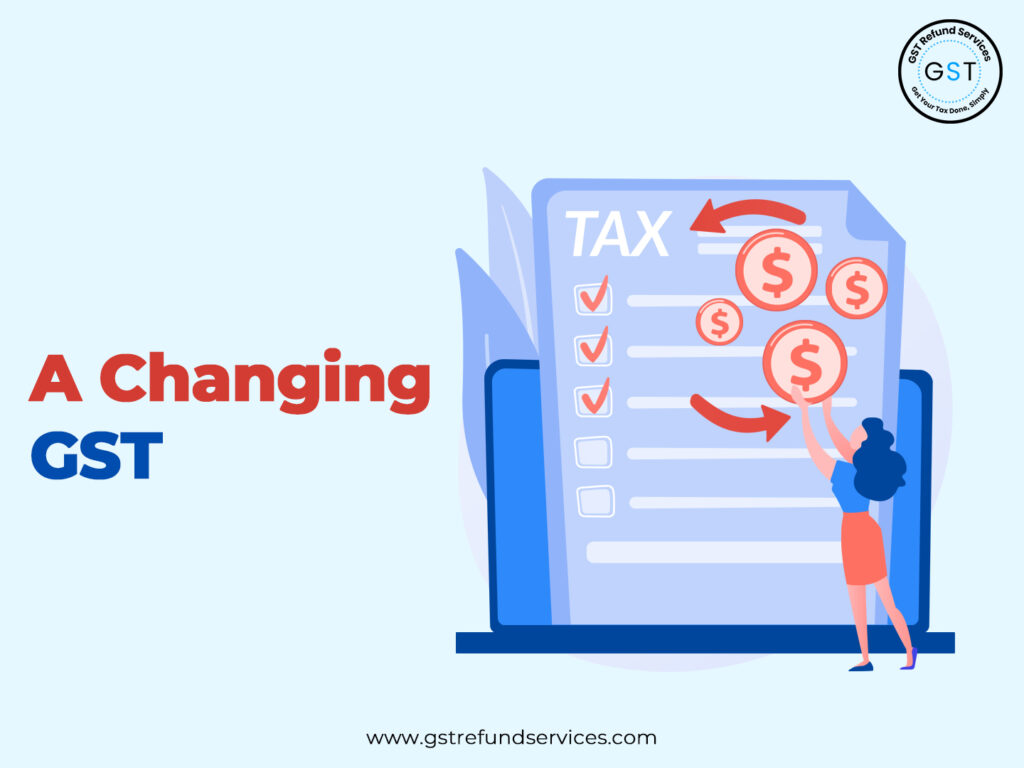GST Future, tax adventurers! GST has a bright future ahead of it, full of opportunities for improved economic growth, simplified taxation, and streamlined systems. However, the path ahead also includes rate simplification, technology advancements, and unanticipated difficulties. We’ll explore these options in this chapter, arming you with knowledge about the forces influencing the evolution of GST and its effects on companies, people, and the Indian economy at large. Prepare yourself on an adventure where every turn reveals fresh perspectives on taxation in the future.
8.1 A changing GST Future

8.1.1 Changes And Reforms in GST Future
GST Future systems are dynamic; they are always being revised and amended to improve their efficacy and correct errors. In an effort to make their GST programs more effective and tax payer-friendly, governments regularly review them.
It is possible to enlarge the revenue base, modify tax rates, streamline the tax law, and enhance compliance procedures. To gather input for enhancing the GST system, governments converse with various stakeholders such as tax professionals and enterprises.
8.1.2 GST 2.0: What Can We Expect?
“GST 2.0” describes the next phase of the development in GST Future, where major changes and enhancements are expected. Even though the specifics could vary from country to country, the following themes frequently appear:
- Technology Integration: A higher dependence on automation and technology to handle taxes, including blockchain, AI, and data analytics to find fraud and improve compliance.
- Simplifying: Examples of simplification include lowering tax slabs, streamlining the GST structure, and lowering the requirements for company compliance.
- Cross-Border Trade: To improve international trade and lessen disputes, better cross-border trade systems are required.
- Real-time Reporting: To reduce errors and tax evasion, real-time reporting and invoice matching are being extended.
- Digital Invoicing: The extensive use of software for digital invoicing, which can simplify tax compliance and reduce the amount of paperwork associated with GST.
- Environmental considerations: To promote sustainability and reduce carbon emissions, environmental levies and incentives may be incorporated.
8.2 International Viewpoints

8.2.1 Trends in Indirect Taxation Around the World
The direction of GST Future is influenced by global trends in indirect taxation. Nations frequently assess their Goods and Services Tax (GST) systems against global best practices and adapt to changing international tax standards. The main tendencies are:
- Digital Services Tax: A growing trend is taxing digital services and e-commerce. Many countries are investigating ways to tax digital platforms and services in order to capitalize on the growth of the digital economy.
- Environmental taxes: There have been talks about imposing fees on items like the use of plastic, carbon emissions, and other environmental repercussions as environmental concerns have grown. The purpose of these levies is to promote environmentally friendly behavior.
- E-invoicing and Digitalization: Globally, digital invoicing and real-time reporting are growing in popularity. Countries are adopting standardized electronic invoicing systems in an effort to reduce fraud and boost tax compliance.
8.2.2 Conclusions From Successful GST Rollouts
Future GST implementations will be influenced by the lessons gained from the successful introduction of the GST in several countries. Governments and policymakers usually study the experiences of countries that have successfully adopted GST in order to pinpoint effective strategies and avoid potential problems.
These lessons emphasize the importance of a robust digital infrastructure, the need of efficient taxpayer education and communication, and the necessity of finding a balance between tax collection and economic growth.
Visit GST Refund Services for More!


